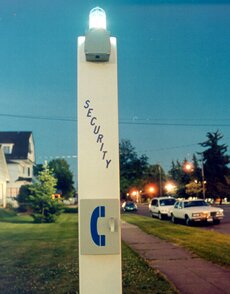 |
 |
 |
|
|
||||||||||||||
|
|
||||||||||||||
| Email Article | Printable Page |
Knowing Campus Crime Stats Heightens Our Awareness
Recently, I went to Hampton University's police department and asked for a list of all the campus crime reported in the past year.
The occasion was Sunshine Week, March 12-18, when the nation's news outlets turn a spotlight on the public's right to information from government agencies.
 |
Under the federal Clery Act, also known as the campus criminal reporting act, colleges are obligated to make crime information public.
I didn't really expect to receive the list. Being a student journalist at a private historically black college, I've become used to being turned down.
When I served as campus editor for the student paper, the Hampton Script, administrators laughed at us when we asked for simple things such as interviews and crime reports. When the Script published an article detailing the number of cafeteria health violations, the administration went so far as to burn the newspapers. Rebels, they called us.
So it was nothing less than a shock when the police department secretary handed me a glossy booklet listing all the campus crime reported since 2002 in an organized chart.
 |
|
Photo credit: www.gonzaga.edu
|
She didn't ask why.
She didn't write down my name.
She didn't even give me an odd look. She handed it over with a smile.
"Have a nice day, honey," she said.
It was awkward.
Not what I expected.
In 1998, the U.S. Department of Education found Hampton University in violation of the campus criminal reporting act, according to the Education Department's Web site.
And, most recently, in 2004, the Daily Press in Newport News, Va., reported that Hampton University was disciplined by the nonprofit watchdog group Security on Campus Inc. for incorrectly reporting its crime stats.
Under the Jeanne Clery Disclosure of Campus Security Policy and Campus Crime Statistics Act, or more simply the Clery Act, public and private colleges and universities across the United States are required to disclose information about crime on and around their campuses.
The law is named after Lehigh University freshman Jeanne Ann Clery, who was raped and murdered in her dormitory room in 1986.
Her parents discovered that the university hadn't told the students about 38 violent crimes that took place at the college the year before her murder. At that time, private universities were not obligated to make campus crime information public.
In 1990, Congress enacted the Crime Awareness and Campus Security Act, which later became known as the Clery Act.
"The Clery Act arms students with information with what truly happens on campus," said Mike Hiestand, attorney and legal consultant with the Student Press Law Center, a Washington-based group that advises student journalists and advocates for their rights. "Knowing about campus crime makes students aware of risks that might exist and, ultimately make them safer."
It seems that Hampton learned its lesson.
In January, a Hampton student was shot at an off-campus party. University police sent out a "Safety Alert" to the residents:
"Recently, one of our students was injured while attending an off-campus non-sanctioned party," it began. "There are a few things that you, as students, should be aware of for your safety when attending parties.
"Walk away from confrontations," it said. "Keeping it real may not be keeping it safe."
I've never thought of looking into the crime statistics on Hampton's campus. Because the campus isn't located in what I think to be a high-crime area, I've never felt vulnerable. I rarely lock my room and car doors, and I've become pretty trustworthy about people borrowing things.
The crime stats tell a different story.
In 2004, there were 37 burglaries on campus and 30 in the residence halls.
For a journalist, these statistics provide story ideas: I can examine, for example, what might have influenced the drop in annual burglaries since 2002 from 59 to 37.
More important: As a resident, the numbers tell me to be more aware of my surroundings.
Hiding them only creates an illusion that allows residents to falsely feel safe when, in reality, they aren't.
Making the crime information accessible can allow a community to grow and improve. Students, administrators and journalists can push for tougher punishment for violators, more lighting on campus and more awareness.
It is vital that Hampton University and every other institution of higher learning provide these statistics to their residents.
Posted March 27, 2006
In Voices
| Home | News | Sports | Culture | Voices | Images | Projects | About Us Copyright © 2008 Black College Wire. Black College Wire is a project of the Black College Communication Association and has partnerships with The National Association of Black Journalists and the Robert C. Maynard Institute for Journalism Education. |